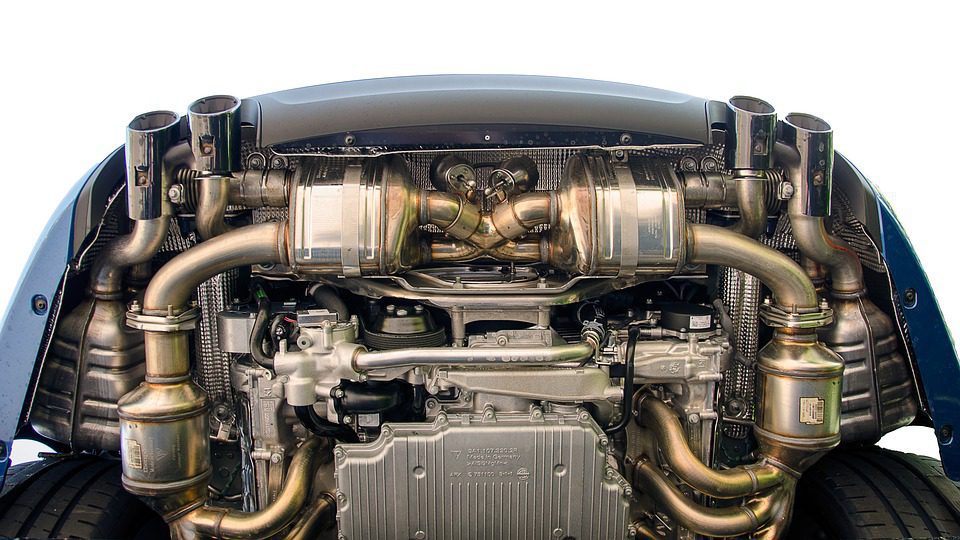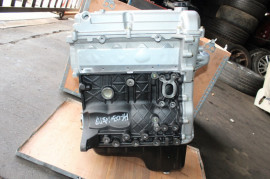Opel Corsa Engine: Efficiency and Reliability for Your Vehicle
Opel Corsa Engine: Efficiency and Reliability for Your Vehicle
Blog Article
Discovering the Inner Functions of a Compact Automobile's Engine System
As vehicle drivers, we frequently take for approved the elaborate processes that take place within the confines of our vehicle's engine system. The small yet complex equipment that drives us onward is a marvel of design precision and sychronisation. From the controlled surges in the combustion chamber to the thorough timing of gas shot, every element plays an important function in the smooth procedure of the engine. In this exploration of a small car's engine system, we will certainly unwind the inner operations of this mechanical harmony, clarifying the mysteries that drive us forward on our daily journeys.
Combustion Process Introduction
The burning process in a portable automobile's engine system is a crucial mechanism that efficiently transforms fuel into energy to power the automobile. This procedure happens within the burning chamber of the engine, where fuel and air mix, fire up, and create regulated surges. The combustion process consists of four main phases: consumption, compression, exhaust, and power.
During the consumption phase, the piston moves downward, attracting in a combination of air and fuel into the burning chamber. This downward activity creates the power needed to drive the car. This cyclic burning procedure is basic to the operation of a compact lorry's engine system, guaranteeing effective power conversion for propulsion.
Piston and Cyndrical Tube Communication

The piston's precise fit within the cylinder is important for keeping optimum compression and preventing power loss throughout burning. Limited clearances in between the piston and cyndrical tube wall surfaces guarantee effective sealing, enabling the piston to move smoothly without enabling gases to leak past. Proper lubrication is also essential to lower rubbing and use in between these parts, enhancing long life and efficiency.
Moreover, the style and materials used in manufacturing the piston and cyndrical tube effect engine efficiency and sturdiness. Modern engines typically use lightweight yet long lasting materials like light weight aluminum alloys for pistons and cylinder linings to lower inertia and enhance thermal effectiveness. In general, the harmonious communication between the piston and cylinder is basic to the engine's performance and overall performance.
Fuel Injection System Capability
Fuel injection systems in portable car engines play a crucial duty in exactly delivering gas to the combustion chamber for effective and controlled ignition. The gas injection system operates by infusing gas into the burning chamber at the optimum moment during the engine's operation (opel corsa engine). This specific timing guarantees that the gas mixes equally with the air for appropriate combustion, leading to enhanced gas effectiveness and reduced exhausts
There are mainly 2 types of gas injection systems made use of in portable vehicle engines: port fuel injection (PFI) and direct gas injection (DFI) PFI systems inject gas into the consumption port before the intake shutoff, while DFI systems inject fuel straight right into the combustion chamber. Both systems have their advantages, with DFI offering much better gas atomization and PFI providing a much more economical solution.
Understanding Engine Cooling Mechanisms
Effective procedure of a compact automobile's engine counts heavily on the efficiency of its cooling systems. Engine air conditioning is necessary to protect against overheating, which can result in severe damages and decreased performance. The air conditioning system in a compact car generally includes numerous parts collaborating to manage the engine temperature. One crucial part is the radiator, which makes use of coolant to absorb heat from the engine. As the hot coolant flows through the radiator, it releases heat into the air, cooling off before going back to the engine. The water pump flows the coolant through the engine and radiator, making certain a consistent circulation to manage temperature level. Additionally, the thermostat aids regulate the coolant flow to maintain optimum engine temperature. Some automobiles likewise have cooling down followers that trigger when additional cooling is required, such as during hefty web traffic or heat. Comprehending these engine air conditioning devices is important for preserving the efficiency and long life of a small automobile's engine system.

Exhaust System Parts Explained
The optimal performance of a compact vehicle's engine air conditioning systems relies visite site on a complementary system referred to as the exhaust system, which comprises different crucial parts for making sure reliable exhausts and engine efficiency. The exhaust system consists of parts such as the exhaust manifold, catalytic Home Page converter, muffler, and tailpipe. The exhaust manifold accumulates exhaust gases from the engine's paths and cyndrical tubes them to the catalytic converter. The catalytic converter then converts unsafe pollutants in the exhaust into less unsafe discharges prior to releasing them with the muffler and tailpipe.
One crucial element of the exhaust system is the oxygen sensing unit, which keeps an eye on the oxygen degrees in the exhaust gases to aid manage gas usage and guarantee optimum engine efficiency. opel corsa engine. Additionally, the resonator might exist in some exhaust systems to minimize noise degrees. In general, the exhaust system plays a vital role in preserving engine efficiency, decreasing unsafe exhausts, and ensuring a quieter driving experience for portable automobile proprietors

Verdict
Finally, the compact vehicle's engine system is a complex combination of parts that collaborate to assist in the burning procedure, convert gas right into power, and get rid of waste gases. Understanding the inner workings of the engine system, including the piston and cyndrical tube communication, gas injection system, engine cooling devices, and exhaust system parts, is crucial for preserving optimal efficiency and efficiency of the vehicle.
The burning process in a small vehicle's engine system is an essential system that effectively converts fuel right into energy to power the lorry.Gas injection systems in small vehicle engines play a crucial duty in exactly supplying fuel to the burning chamber for controlled and efficient ignition.There are largely two types of fuel injection systems utilized in their explanation portable car engines: port fuel injection (PFI) and direct gas shot (DFI) Recognizing these engine cooling mechanisms is important for preserving the efficiency and long life of a portable vehicle's engine system.
The optimum performance of a small car's engine air conditioning devices depends on a corresponding system recognized as the exhaust system, which consists of various vital elements for guaranteeing reliable discharges and engine efficiency.
Report this page